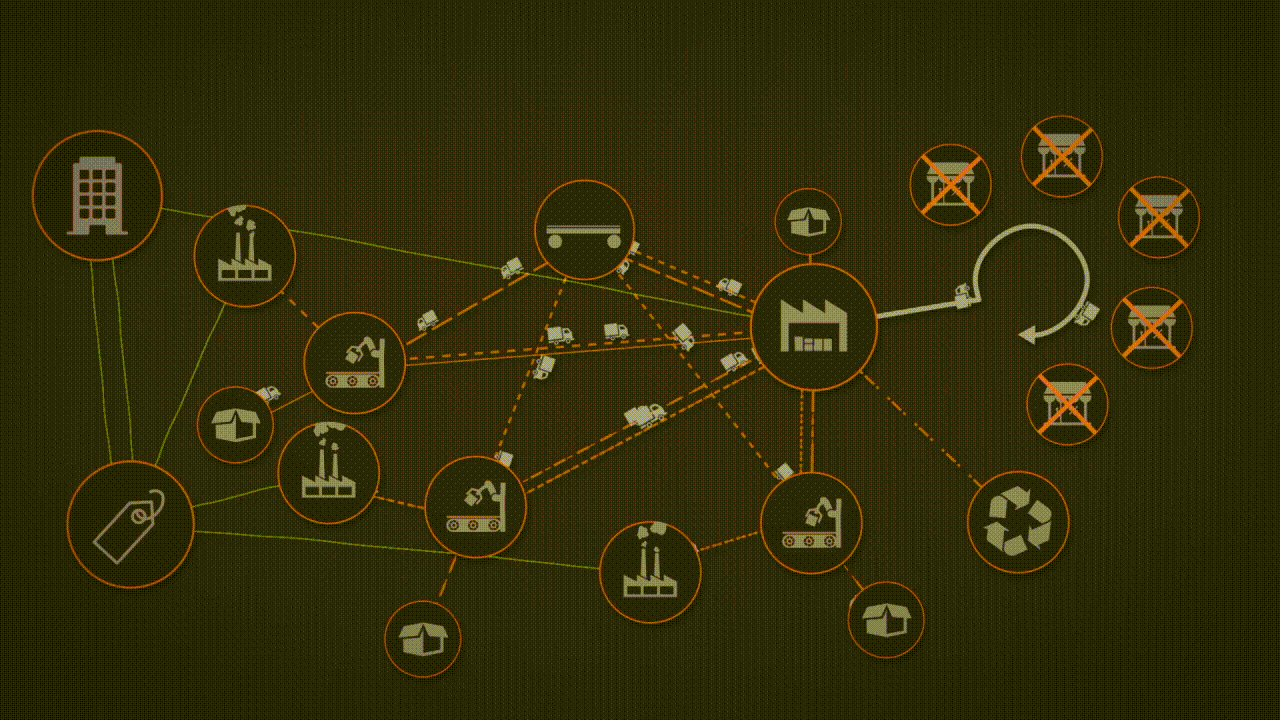At Easter time, you cannot miss the promotion articles presented in colourful cardboard displays. But did you know that these temporary displays generate more than half of the total emissions of a store each year, without having any actual insights in the return on investments? Both retailers and brands have limited and scattered solutions to manage them, especially since these in-store displays represent the most valuable spots in retail.
Most of these one-time use displays are filled at a Distribution Centre (DC) of a brand supplier, transported to the DC of the retailer and distributed to the supermarkets. The whole process from design to logistics is managed by brand suppliers and not by the retailer. After the promotion the supermarket needs to separate the different material of plastics, cardboard and wood before it goes to a waste treatment centre or, in the worst case, to landfill.
This process seemed to be the best possible way of managing promotions on the shop floor, but there are three important issues.
- Challenges of Managing Promotional Spots
There are lower execution and occupation rates per promo spot. This is mainly since it is challenging to measure the execution of all displays in all supermarkets. An estimated more than 30% of displays never make it to the shop floor and even when a pre-filled display is 100% accepted by a store, this does not mean that the display is also placed on the right spot at the right time of the promotion. As there is no physical proof of placement and most products sold in display are also placed on regular shelves, measuring outcomes of sales becomes tricky.
In addition, is it difficult to measure exactly how fast a product sells out. The problem is that in a very large store the display could be sold out in the targeted one or two weeks, but in most average or smaller stores the sell-out could be more than 6 weeks.
- Supply-Chain Chaos
You may have noticed that most promotional displays in-stores are made up of cardboard. Though versatile, this raw material can cause complications as it travels through the supply chain and appears in the store as a colourful printed display of your favourite product.
For a product to move smoothly in a supply chain, the various processes of shipping, cutting, printing and packing need to be standardised. However, every brand wants a unique display to showcase their product on the shop floor. This can impact all the logistics at play, from merchandising to presales and even changing the layers of cardboard to build a display to hold a heavier product.
- Unsustainable: Cardboard and CO2 Waste
The cardboard use including packaging is on average 7.5 kg per display. Almost every major brand uses these one-time use displays in all countries around the globe to promote their products in store.
Based on our calculations, the number of promotions is 150 million per year for all stores over the world and therefore the cardboard waste is more than 1 billion kg. each year.
The supply chain of a pre-filled display has a CO2 amount of 9,158 kg* CO2 per display and therefore 1.37 million tonnes of CO2 globally. Per store, the amount of CO2 for all displays promotions is 200% of the metric tonnes CO2 emissions of an average store.
In part II of the blog series, I discuss ways to standadise and simplify the promotional system in supermarkets.

